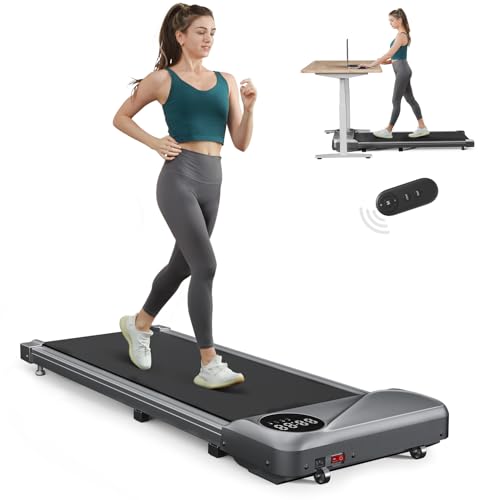The Treadmill Machine: An Educational Guide to Your Fitness Journey
The treadmill machine has become a vital tool in contemporary fitness routines. Whether Yi Lutman is a seasoned athlete or a novice trying to get into shape, a treadmill provides a hassle-free and reliable method to attain physical fitness goals. This article will explore the different aspects of treadmill machines, their benefits, various types available, and standards for efficient usage.
Advantages of Using a Treadmill
Treadmills provide many physical and psychological health advantages that add to overall well-being. Some crucial benefits include:
- Cardiovascular Health: Regular use of a treadmill assists in improving heart health by strengthening the heart muscles and enhancing circulation.
- Weight-loss: By engaging in constant cardiovascular workouts, people can burn considerable calories, helping in weight loss and management.
- Joint-Friendly Exercise: Treadmills offer a regulated environment that enables users to change speeds and inclines, making it simpler on the joints than working on hard surfaces.
- Convenience: Treadmills are particularly helpful for those who reside in areas with negative weather, as they can be utilized inside year-round.
- Personalized Workouts: Many modern-day treadmills come geared up with programs and features that allow users to personalize their exercises for varying intensity levels.
Health Benefits Overview
| Advantage | Description |
|---|---|
| Cardiovascular Improvement | Reinforces the heart, improving total circulation and endurance. |
| Weight Management | Effective calorie burning leading to weight reduction. |
| Injury Prevention | Minimized risk of injury due to adjustable surfaces and controlled environments. |
| Inspiration and Consistency | Offers an indoor option that motivates regular workout regardless of weather. |
| Boosted Mood | Regular exercise contributes to the release of endorphins, improving psychological wellness. |
Kinds Of Treadmill Machines
While treadmills might appear straightforward, various types accommodate various requirements and choices. Here are the main classifications:
- Manual Treadmills: These require no power and are moved by the user's effort. They often use up less area and are quieter but can provide a steeper learning curve for newbies.
- Electric or Motorized Treadmills: The most common type, they feature automated programs for speed and slope. They are usually more flexible but require electricity to run.
- Folding Treadmills: Designed for those with restricted area, folding treadmills can be collapsed and stored away when not in usage, making them ideal for little houses.
- Incline Treadmills: These machines offer the ability to raise the slope, replicating hill runs for a more reliable workout.
- Industrial Treadmills: Built for heavy usage, these machines are typically discovered in health clubs and gym and come with a variety of features and sturdiness.
Contrast of Treadmill Types
| Type | Power Source | Best For | Area Considerations |
|---|---|---|---|
| Handbook | None | Novices, budget-conscious users | Low |
| Electric | Plug-in | Differed intensity exercises | Medium to High |
| Folding | Plug-in | Limited area users | Low |
| Slope | Plug-in | Extreme cardio and strength | Medium to High |
| Business | Plug-in | Regular gym usage | High |
Tips for Effective Treadmill Use
To optimize the benefits of a treadmill routine, here are several ideas to think about:
- Warm-Up: Start every exercise with a 5-10 minute warm-up at a sluggish rate to prepare the body.
- Posture: Maintain an upright posture, keeping shoulders back and direct to prevent pressure and injury.
- Period Training: Incorporate different speeds during exercises (high-interval training) to enhance cardiovascular physical fitness and burn calories.
- Use Inclines: To even more improve workouts, add incline options to simulate hill running, which constructs strength in the legs.
- Stay Hydrated: Keep a water bottle close by, guaranteeing to drink previously, throughout, and after exercises to stay hydrated.
Advised Treadmill Workouts
- Beginner's Walk: Start at a moderate pace for 20-30 minutes, gradually adding speed as comfort increases.
- Hill Intervals: Alternate between slope and flat surface areas, running uphill for 1 minute followed by walking for 2 minutes.
- Long-Distance Run: Target a consistent pace for an extended period (40-60 minutes), concentrating on endurance.
- Speed Training: Change speeds every minute, starting from a light jog to short bursts of running to enhance speed and cardiovascular health.
FAQs
Q1: How often should I use a treadmill for efficient outcomes?
A1: It is usually recommended to utilize a treadmill at least three times each week for 30-60 minutes to see substantial outcomes.
Q2: Can I drop weight utilizing a treadmill?
A2: Yes, with a mix of regular exercise, a balanced diet plan, and part control, using a treadmill can contribute considerably to weight loss.
Q3: Do I require to warm-up before using the treadmill?
A3: Yes, heating up is important to prepare your body, minimize the threat of injury, and enhance exercise efficiency.
Q4: Is working on a treadmill as effective as running outdoors?
A4: Both have benefits, but a treadmill enables regulated environments, avoiding weather-related disturbances, and may have less impact on the joints.
Q5: Can a treadmill assist with bodybuilding?
A5: While mostly a cardiovascular tool, adjusting slopes can help engage and strengthen particular leg muscles.
Treadmill machines are flexible and can be an important part of a fitness journey. By understanding the various types, advantages, and effective use methods, individuals can take advantage of the full capacity of this equipment. Whether intending for improved cardio health, weight management, or enhanced mental wellness, a treadmill serves as a trustworthy buddy on the road to fitness.

